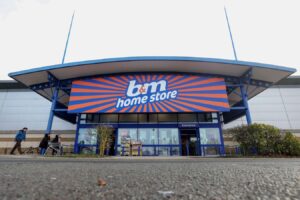Zsuzsa Kecsmar is the Chief Strategy Officer of Antavo AI Loyalty Cloud, a top loyalty technology vendor.
A tier system can make or break your loyalty program. At first glance, they might seem effortlessly manageable, maybe even a fun task to work on: Come up with a few cool names, set a point threshold, pair them with simple enough rewards and you’re good to go.
As a loyalty expert, though, I can immediately profess how unrealistic that idea is. Tiers are a far more complex system than most people would think.
In this article, we’ll break down the benefits of a tiered loyalty program. After that, we’ll look at three cases where introducing a tier system might elicit more pain than gain and potentially hinder a program’s attractiveness and worth.
Benefits Of Tier-Based Loyalty Programs
Constant Motivation For Loyal Members To Engage
What makes a tier system truly outstanding is how motivating it can be for loyal members to double down on purchases, engage and remain under a specific brand’s umbrella. A well-thought-out tier concept constantly encourages customers to:
• Rise higher in the ranks to attain even more exclusive benefits and partner offers.
• Not to lose their hard-earned status and member benefits.
Just imagine you’re a frequent flyer being reminded every time you open the loyalty app that you are only 100 points away from leveling up, which would unlock perks like priority check-in and boarding, seats with extra legroom or lounge access. Wouldn’t you book an extra route or spend a little more at the airport just to enjoy all of that? Wouldn’t you want to fly exclusively with this airline to keep all of the above comforts instead of starting from scratch with another company?
Effective Segmentation And Personalized Approach
Tiers allow brands to categorize their customer base effectively based on purchase history and the overall customer journey. This enables personalized communication, targeted offers and tailored experiences.
Let’s look at your “whales”—as they said in Ocean’s Thirteen—your highest spending customers. They’re known to both spend more and engage more. A tier system (backed up by enhanced analytics) lets you both recognize and elevate them. How? For instance, you can tailor your communication, rewards and tier benefits to fit their lifestyle and expectations. But don’t forget about newcomers either. Entry-level members should be appreciated for choosing you, while ambassadors should be rewarded for representing you. A crafty tier system allows you to do both.
Competitive Differentiation In Saturated Markets
Creating a realistic yet inspirational, audience-specific tier system can help you stand out from the crowd. Customers need to feel like they’re a valued member of the program from the moment they sign up while simultaneously being driven to accumulate more points and seize better rewards.
Research and partners will be your joker cards here. Make sure to truly tune in to what type of rewards and benefits are coveted by your audience. Think about experiences and lifestyle choices. Prioritize comfort and exclusivity.
Another way to stand out is through partner offers. I think department stores and hotels excel in this regard. Luxury stores incorporate exclusive sightseeing tours, brand events and workout classes for their highest-tier members, while hotels allow guests to earn and spend points at airlines and car services, enabling customers to rack up points faster and enjoy better benefits sooner.
Potential Downsides When Introducing Tiers In Your Loyalty Program
Complexity And Confusion
Introducing multiple tiers can sometimes confuse customers, especially if the tiers aren’t unique enough or the benefits and requirements are merely incremental.
Whether you’re starting out with a tier-based program or switching to it during a revamp, it’s imperative to gradually increase the practical value of your tiers. Think about adding experiential benefits and complimentary services alongside a bigger discount.
Also, let customers know what the rules are. The complexity of having to jump through too many hoops in order to reach a tier (even if it genuinely holds value) may deter some customers from participating in the program altogether.
Exclusivity Backlash
While exclusivity can be a powerful motivator, it can also alienate customers who are unable to reach higher tiers, potentially leading to churn or reduced engagement.
Putting all your eggs in one basket is never a good idea. The same goes for offering rewards exclusively to high-spending customers. Increasing value is one thing; excluding less financially abled customers from the narrative is another. A tier system that doesn’t reflect an appreciation for every single participant is essentially “leaning on its sword.”
Cost And Resource Management
To truly stand out, your tiers need to be not only well-researched but also well-maintained. The cost of execution, potential adjustments, necessary human resources, and internal and partner rewards will remain significant additions to your budget.
The costs associated with running a tiered program need to be carefully considered and measured to see whether the long-term benefits truly outweigh the investment required from the company. Looking at alternative solutions, like a freemium model, could turn out to be a worthwhile effort.
The Decision Is Yours
The implementation of tier-based loyalty programs can drive significant value for your brand—if done right. Before making a decision, make sure to take into consideration the potential financial requirements and much-needed human resources and to thoroughly research the tier benefits your audience won’t be able to resist. Once you’ve decided to introduce the tier concept, focus on gradually increasing value and providing truly unforgettable moments in each tier.
Forbes Business Council is the foremost growth and networking organization for business owners and leaders. Do I qualify?
Read the full article here











